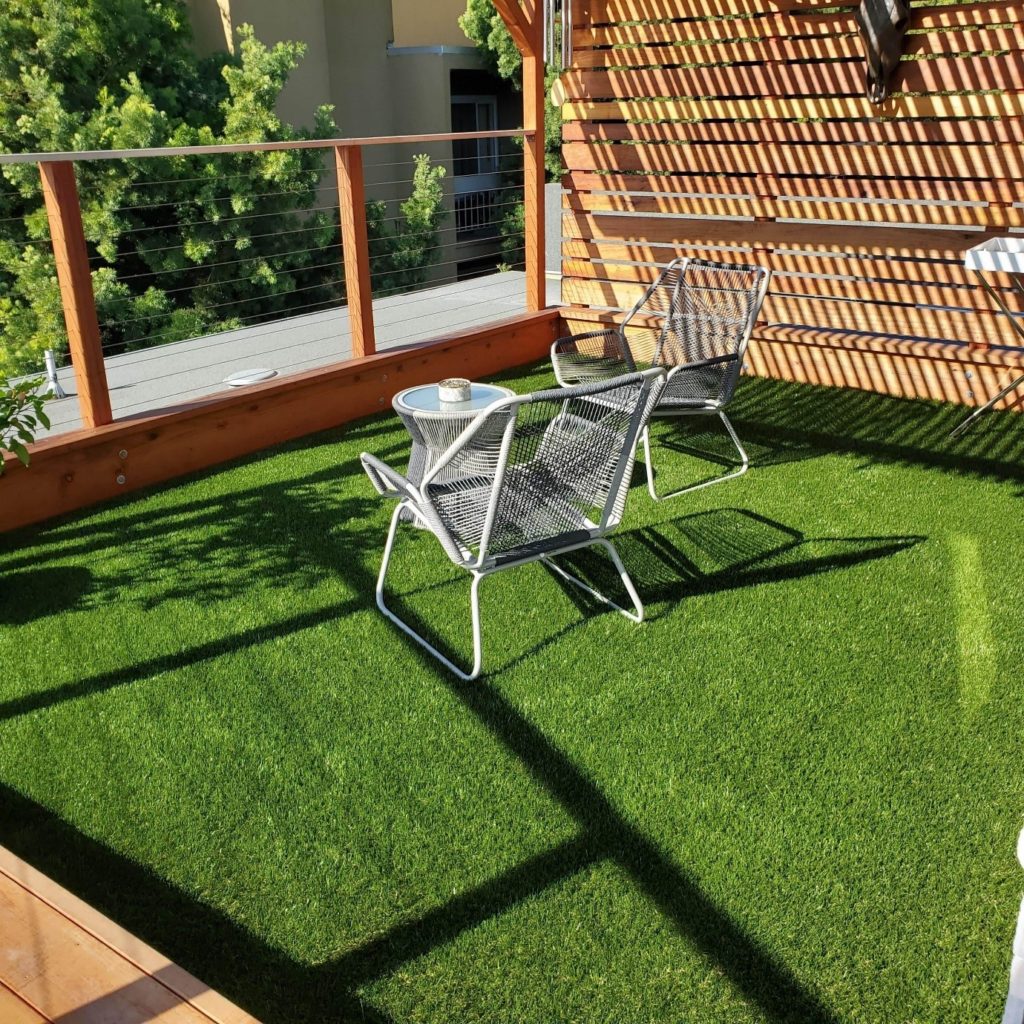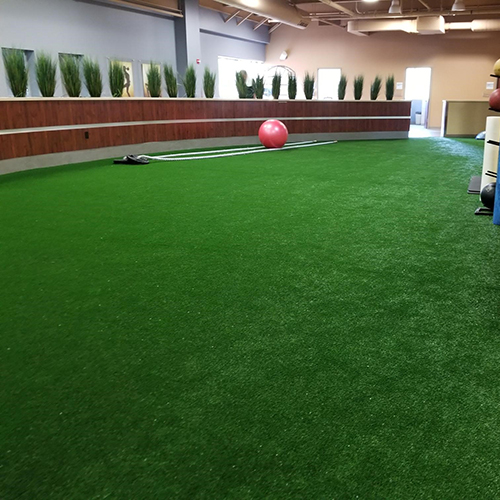Understanding Exactly How Synthetic Grass Functions for Your Home and Yard
Synthetic grass has become a functional service for house owners seeking to improve their outdoor areas without the concerns of conventional yard maintenance. Comprehending its structure, setup process, and the different kinds available can reveal significant benefits for both visual appeals and functionality. Nonetheless, the implications of selecting man-made turf prolong beyond plain appearance; they discuss ecological considerations and long-term sustainability. As we discover these elements, one have to think about exactly how this ingenious strategy can basically modify the landscape of home gardening. What elements should you consider prior to making the transition?
Advantages of Synthetic Grass
Recognizing the growing popularity of synthetic grass, it is vital to explore its countless benefits. Among the most significant advantages is the decrease in maintenance requirements. Unlike all-natural turf, synthetic grass does not need watering, fertilizing, or mowing, which converts to time and expense financial savings for house owners. This low-maintenance option is particularly enticing in areas with limited water resources, as it saves water and reduces total environmental impact (Mesa artificial turf).
Additionally, synthetic grass gives a constantly green and rich look throughout the year, regardless of weather problems. This aesthetic allure improves the visual top quality of any type of landscape, making it an eye-catching selection for household buildings. Artificial grass is sturdy and designed to endure heavy foot traffic, making it an ideal service for families with family pets and youngsters.
Safety and security is an additional crucial consideration; contemporary synthetic grass is usually made from safe materials and integrates shock-absorbing modern technologies, decreasing the risk of injuries throughout play. Man-made grass is immune to weeds and pests, removing the requirement for chemical therapies, thereby advertising a healthier outdoor atmosphere. Overall, the advantages of synthetic grass make it a compelling alternative for improving home and yard rooms.
Installment Process Review
When considering the installment of synthetic grass, an organized technique is necessary to make sure ideal outcomes. The installation process typically starts with extensive website prep work, which entails getting rid of the location of any type of existing turf, particles, and rocks. This action is crucial for developing a steady and degree structure.
Next, it is essential to assess the drainage capacities of the location. Appropriate drain is essential to prevent water pooling on the surface area, which could result in early wear or issues with mold and mildew. This may need excavation and the installment of a drainage system if required.
As soon as the site is prepared, a base layer is set up, typically containing smashed rock or disintegrated granite, compressed to develop a strong surface area. After achieving a smooth base, a geotextile material is laid down to prevent weed growth.
The grass rolls are placed, cut to fit, and secured at the joints using sticky or specific turf tape. Correctly complying with these actions will result in a sturdy and aesthetically pleasing synthetic grass installment.
Types of Synthetic Grass

One of the primary groups is property lawn, which is typically used in yards, backyards, and play areas. This type usually includes a soft texture, making it safe for children and pet dogs. Commercial lawn, on the various other hand, is engineered for high-traffic areas, such as sporting activities areas and local parks. It provides resilience and strength, guaranteeing it withstands rigorous usage while maintaining its appearance.
Another category consists of landscape turf, which simulates natural grass carefully to enhance the visual charm of yards and exterior rooms. In addition, placing environment-friendly grass is specifically made for golf lovers, including a much shorter heap elevation and a smooth surface for an ideal putting experience.
Lastly, pet-friendly turf includes antimicrobial buildings and resilient products to guarantee a sanitary and safe atmosphere for pets. Selecting the best kind of click this synthetic grass is important for achieving the intended look and functionality in your home and garden.
Maintenance Needs
Appropriate upkeep is essential for prolonging the life-span and look of synthetic grass. Routine maintenance not just boosts visual appeal but additionally makes sure optimum performance. The main upkeep jobs consist of cleaning, rinsing, and examining the grass.

Rinsing the grass with water aids remove dust, animal, and particles waste. Utilizing a pipe with a spray nozzle makes this job efficient and effective. In locations vulnerable to hefty rains, ensure proper drain to avoid merging.
In addition, routine evaluations for damages, such as tears or loose joints, are critical. Prompt fixings can avoid a lot more considerable problems and preserve the honesty of the grass. By sticking to these upkeep needs, home owners can appreciate the charm and functionality of their artificial turf for years ahead, guaranteeing a vibrant and welcoming exterior area.
Ecological Considerations
Fabricated turf presents a complicated range of environmental considerations that call for careful analysis. Artificial turf companies. While it minimizes the need for water, plant foods, and chemicals, which are usually connected with all-natural turf upkeep, there are considerable concerns concerning its manufacturing, disposal, and use
The production of synthetic lawn includes petroleum-based materials, raising inquiries regarding fossil fuel intake and greenhouse gas discharges. The installation procedure typically requires a layer of infill, often composed of products like crumb rubber, which can release unsafe chemicals into the atmosphere.

Disposal of synthetic grass offers one more challenge, as it is not biodegradable and can add to see this website land fill waste. Some reusing choices exist, yet they are not widely readily available or available.
Verdict
In recap, synthetic grass provides various benefits for household and yard applications, including aesthetic charm, low maintenance, and safety for kids and pet dogs. Various kinds of fabricated turf cater to various demands and preferences, while ecological considerations highlight its prospective sustainability advantages.
On the whole, the advantages of fabricated lawn make it a compelling alternative for enhancing home and yard areas.
When taking into consideration the setup of fabricated turf, an organized technique is important to ensure ideal outcomes. The lawn rolls are placed, cut to fit, and secured at the joints using sticky or specialized grass tape. Correctly following these steps will result in a long lasting and aesthetically pleasing fabricated lawn setup.
In recap, fabricated lawn offers countless benefits for household and yard applications, consisting of visual appeal, low upkeep, and safety and security for children and pet dogs.
 Brian Bonsall Then & Now!
Brian Bonsall Then & Now! Lark Voorhies Then & Now!
Lark Voorhies Then & Now! Yasmine Bleeth Then & Now!
Yasmine Bleeth Then & Now! Elisabeth Shue Then & Now!
Elisabeth Shue Then & Now! Meadow Walker Then & Now!
Meadow Walker Then & Now!